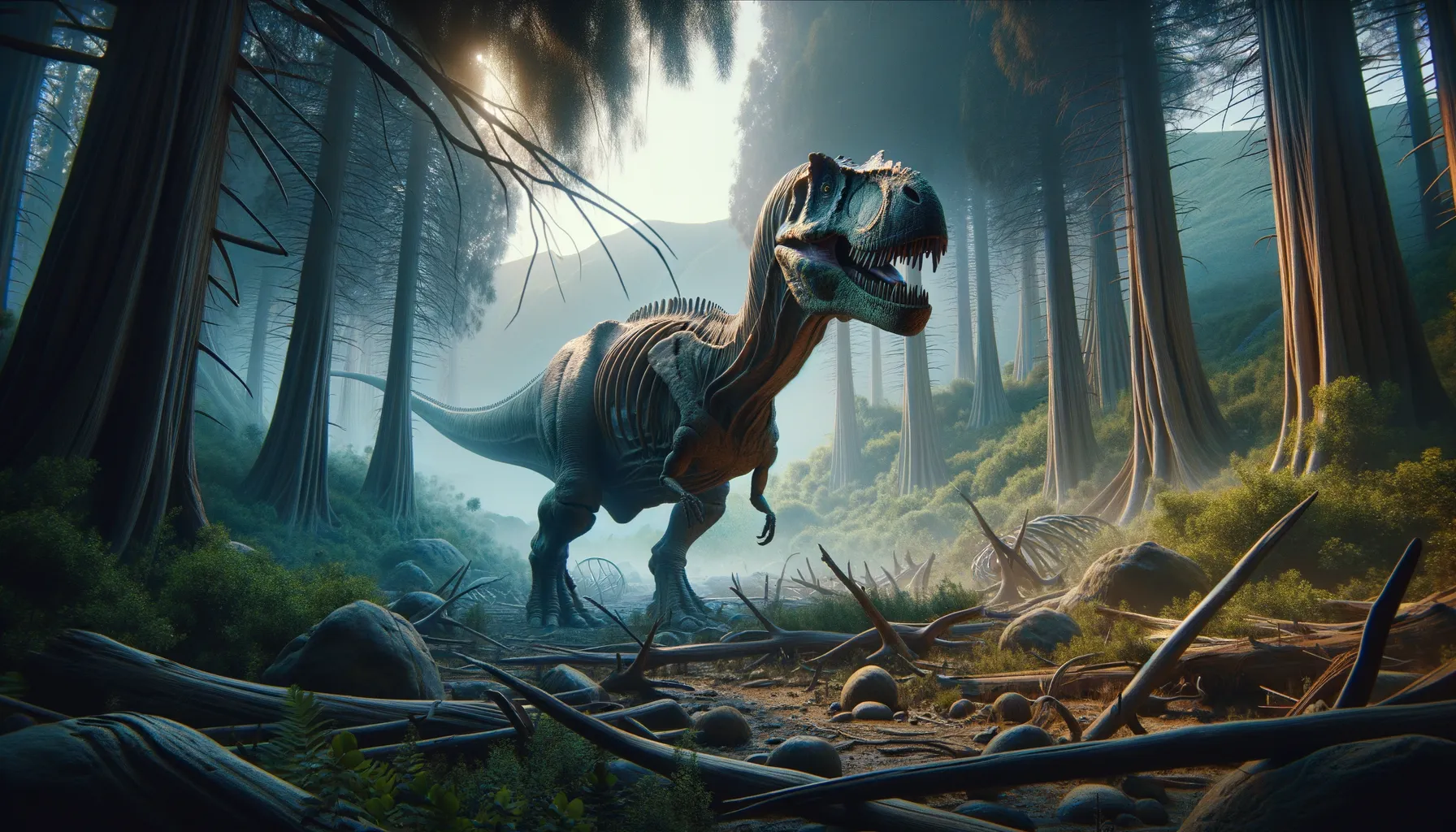
Rhadinosaurus
A mysterious herbivore of ancient Europe!
Period
Cretaceous
Length
Approximately 5 meters long.
Height
Stood about 2 meters tall.
Weight
Estimated to weigh around 200 kilograms.
Rhadinosaurus was a small, plant-eating dinosaur that lived during the Cretaceous period. Known mostly from partial skeletal remains, much about this dinosaur remains a mystery including its exact appearance and behavior. It likely roamed in what is now Europe, mainly feeding on the abundant vegetation of the time.
Diet
Rhadinosaurus was a herbivore, meaning its diet primarily consisted of plants. It would have fed on a variety of ferns, cycads, and other prehistoric vegetation available during its time.
Hunting
As a herbivore, Rhadinosaurus did not hunt for prey. Instead, it likely spent much of its time grazing and foraging for edible plants.
Environmental challenges
The Cretaceous period was a time of shifting continents which likely impacted the habitats of Rhadinosaurus. Competition for food with other herbivores might have posed a challenge. Predatory threats from larger carnivorous dinosaurs would have also been a constant danger.
Speed
Likely a slow-moving creature.
Lifespan
Estimated to live around 20-30 years.
First discovery
Discovered in 1881 by Edward Drinker Cope.
Fun Facts
- Rhadinosaurus was a small dinosaur, estimated to be only about 3.5 meters long.
- It lived during the Late Cretaceous period, roughly 100 to 66 million years ago.
- Rhadinosaurus fossils were first discovered in Austria, making it one of the few dinosaur finds in the region.
- The name 'Rhadinosaurus' means 'slender lizard', referring to its likely delicate build.
- Unlike many famous dinosaurs, Rhadinosaurus is known from very limited fossil remains, so much about it is still a mystery.
- It is believed to have been a herbivore, feeding on the lush plant life of its Cretaceous environment.
- Rhadinosaurus was a member of the Nodosauridae family, which included armored dinosaurs closely related to ankylosaurs.
Growth and Development
Like many dinosaurs, Rhadinosaurus likely grew rapidly during its early years and reached full size within a few years. Its growth would have been influenced by available resources and environmental conditions.
Habitat
Rhadinosaurus inhabited dense forests or open landscapes where vegetation thrived. These areas would have provided both food and shelter from predators. Popular in what is now Europe, it likely adapted to a range of temperate environments.
Interaction with other species
As part of its ecosystem, Rhadinosaurus interacted with other herbivores and predators of its time. It might have formed herds for protection against carnivorous dinosaurs. Its relationships with other species centered around competition for food and avoiding predators.
Natural lifespan
Rhadinosaurus could live naturally up to around 30 years.
Reproduction
Rhadinosaurus, like most dinosaurs, likely laid eggs. It might have built simple nests in concealed areas to protect them. Parental care is speculative, but young might have received some protection until they were more independent.
Social behaviour
While specific social behaviors remain speculative, Rhadinosaurus might have lived in small groups. These groups would have offered protection and facilitated safer foraging. Communication among group members could have included vocalizations and other non-verbal signals.
Fossil locations
Fossils of Rhadinosaurus have been found primarily in Austria. These findings provide crucial insights into its geographical distribution. Limited fossil evidence makes thorough analysis challenging, leaving many aspects of its life elusive.
